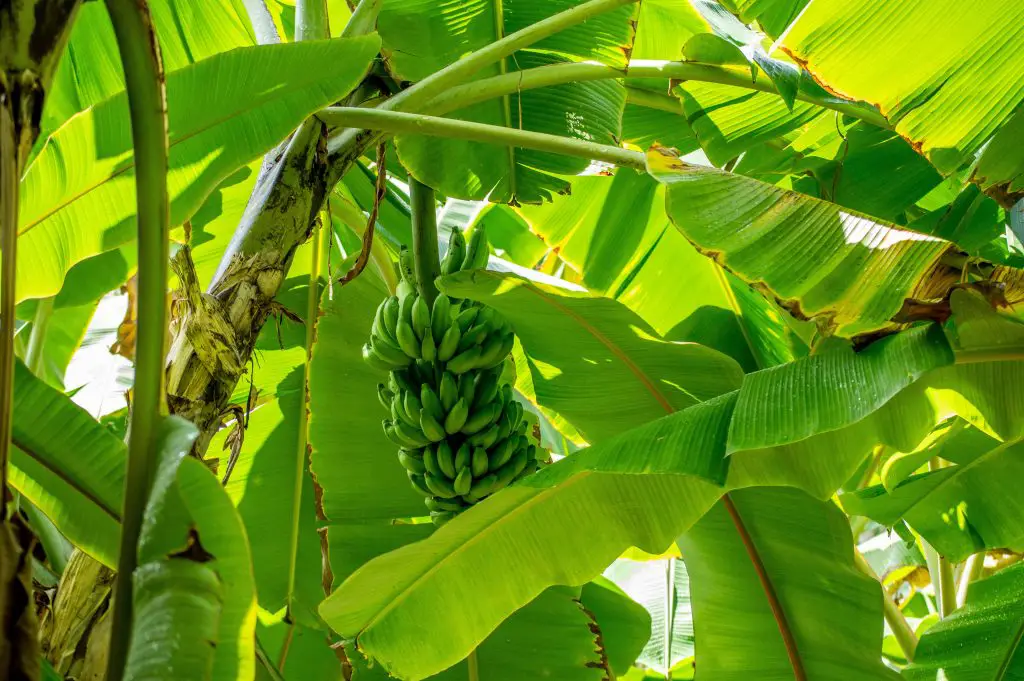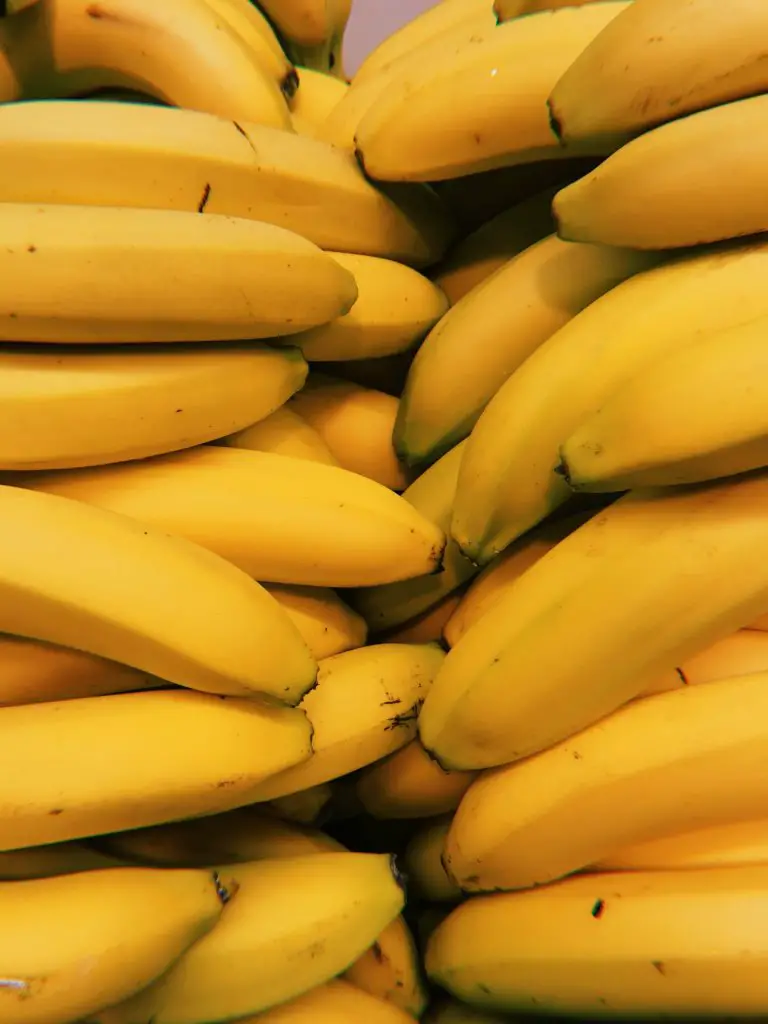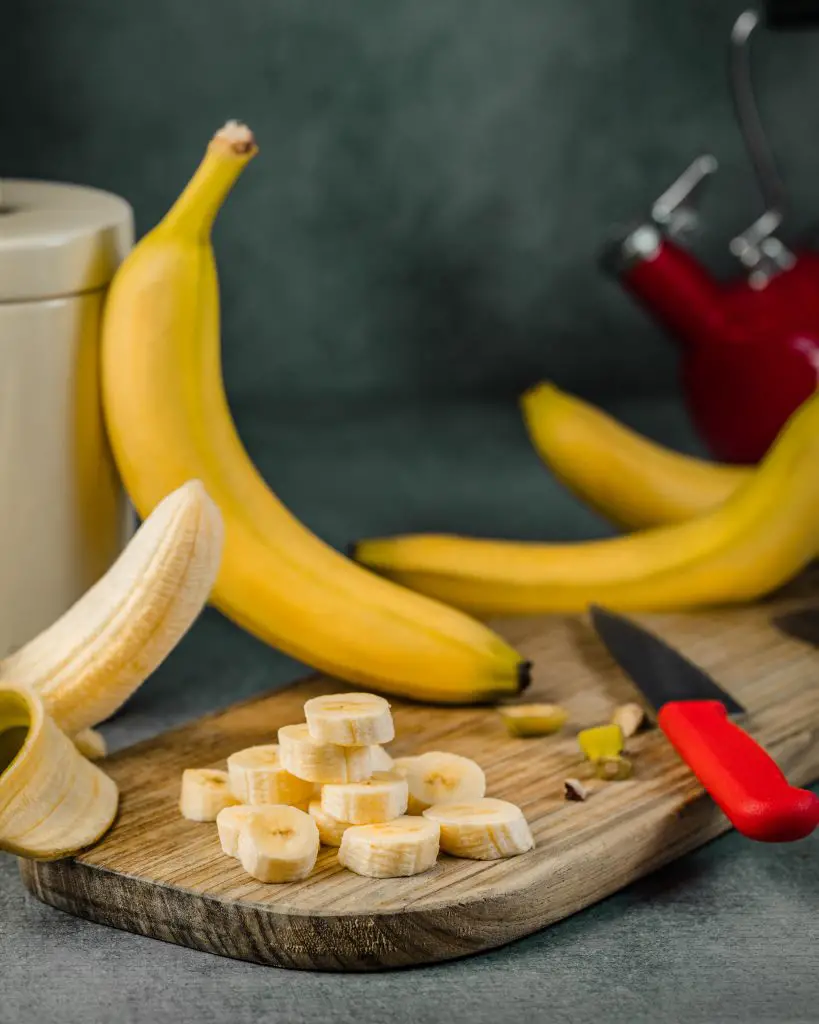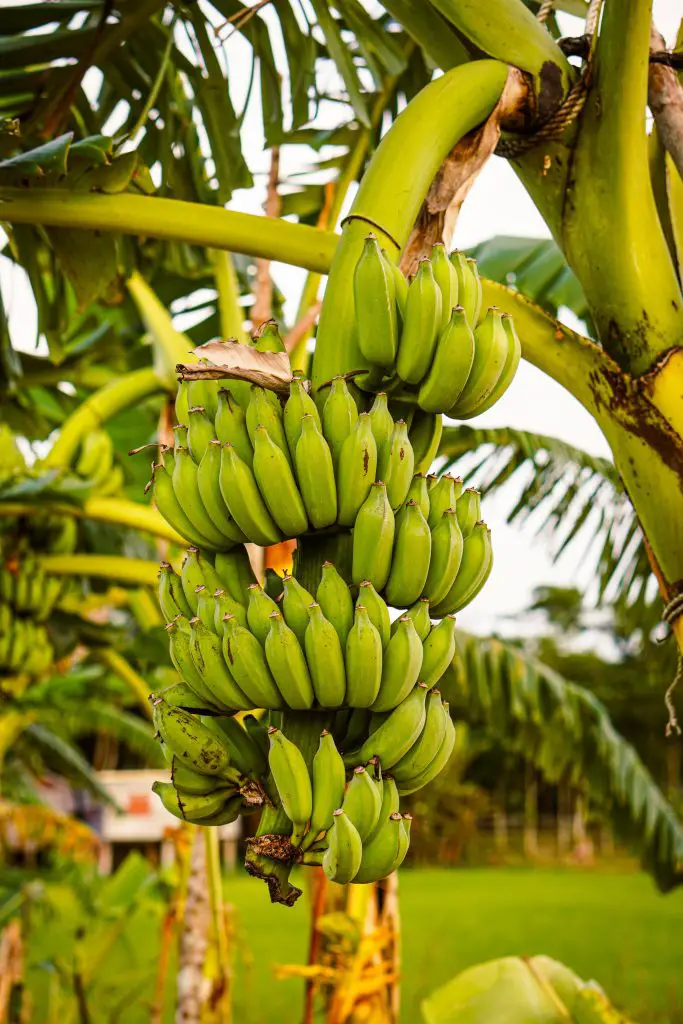Do Bananas Grow On Trees? Bananas are the highest selling fruit in the western world due to its flavor and convenience as a snack. However, many people have not actually seen the plant that this incredibly popular fruit comes from. So do bananas go on trees or something else?
Bananas grow on a plant that are strictly not a tree though many people could easily mistake it for a palm due to the height of the plant which can reach up to 12 to 15 ft depending upon the specific variety. It is in fact a herbaceous plant that is related to ginger and has thick trunk-like stems that the plant produces are made from layers of fibrous material.
Each layer of the fibrous material is approximately half an inch thick and typically the largest stems within the plant have up to 10 to 12 Layers in the trunk. Within each individual layer fibrous material has a structure that is similar to corrugated cardboard with a continuous layer on the outside of either side of the fibrous material and cells inside the layer which are filled with water.

This means that the trunks of the banana plant are relatively heavy when they are removed. In commercial production of banana fruits in the tropics and subtropics a banana plant will produce a stem within a single year followed by a large purple flower which will unfurl over time to produce the fruit which is clumped together in bunches. Each bunch of bananas has anywhere between 50 and 70 bananas depending upon the particular variety.
Once the stem has produced a flower it will not flower again as a result commercial producers cut the plant down to the ground every year leaving another sucker to grow the following year.
Can You Grow Bananas At Home?
Bananas are relatively easy plants to grow at home and they require relatively little maintenance however they do require large amounts of water. If there is not a lot of water around then the plant will probably still survive but not develop large stems.
To overcome that issue at my house I have a banana plant sitting in the back of my house which has bath water that runs onto the plant every every time it is used. This means that I can leave the plant to its own devices throughout the year and not have to water it.

However, banana plants are really only suitable for Zone 9 or 10 and upward if you intend to produce any fruit from it. In locations that are colder than this, the plants will generally not survive. Additionally, if you live in zones 9 or 10 you do have to take a different approach to growing bananas if you want the plant to produce fruit every single year.
Because the temperatures are cooler in zones 9 and 10 the growth rate of the plant is much lower which means that it usually takes around 2 to 3 years for a stork to produce a bunch of bananas. As a result of this, it means that to have bananas coming off your plant every single year you need to have the stalks of different ages on the plant.
For my plant at home, I typically have up to 10 stalks on the plant at any given time and typically I will produce three large bunches of bananas every single year.
How To Care For Your Banana Plant
Banana plants are generally fast-growing plants that do require significant nutrition in order to flower on a regular basis along with large amounts of water as mentioned earlier in the article. If you are living in zones 9 or 10 the amount of water the plant is going to receive is likely to be problematic as such it is best to select an area where the plant will naturally receive large amounts of water and is generally a bit warmer.
At my house what I have done is plant the banana plant next to a brick wall that is south Facing ( I am in the southern hemisphere) if you were growing plants in the Northern Hemisphere the ideal orientation of the plant would be north facing to capture the maximum amount of sun.

Before putting it into the ground it is a good idea to dig in lots of compost and also mulch around the plant heavily as this will help to retain water. The plant can then be left to its own devices for the remainder of the year other than ensuring that it has sufficient water.
As mentioned above if you live in a cooler region then it is likely that the plant will not flower for a couple of years. However, once it does the flower produced will be approximately 10 to 15 inches long and purple in colour. Most varieties will produce this flower in summer and the bananas themselves will develop over the next couple of months and usually can be harvested in autumn.
Once you have removed the bananas from the plant the stalk of the banana can be cut down leaving space for new stalks to grow. This is relatively easy to do because you can simply use a hand saw to cut through the stem of the banana. However, as mentioned earlier in the article these storks are extremely heavy so is advisable to make a couple of cuts to reduce the size of the foliage that comes off the plant.
The plant will naturally produce new suckers on your banana clump from which you should select only a couple to leave on the banana plant and the rest should be removed. If you maintain stalks of a different age on the plant you should be able to produce bananas every single year.

Harvesting And Storing Bananas
Unlike for bananas that you buy in the store these bananas will take some time to ripe which is advantageous because it allows you to spread out when you eat them for an extended period of time. To accelerate the rate of ripening it is best to take a hand or two of the bananas off the clump and bring them inside and put them in the fruit bowl and they will start to ripen.
The remainder of the bananas can just sit outside or in a garage somewhere until you need them. If you are successful in growing a banana you’ll find that you’ll end up with probably 150 bananas off your plant per year. If you are unable to eat that volume of bananas the other option that you have is to freeze the banana so that you can use them and things like smoothies or desserts. We personally coat some of the bananas in chocolate and use them as desserts for months on end.
I hope you found this article useful and have great success growing your bananas at home, if you have any additional questions or comments please leave them in the section below.
Relevant Articles
How Long Does It Take For A Banana Tree To Bear Fruit?
How Much Fruit Does A Tangelo Tree Produce?
How Many Figs Does A Tree Produce?
How Many Cherries Does A Tree Produce?
